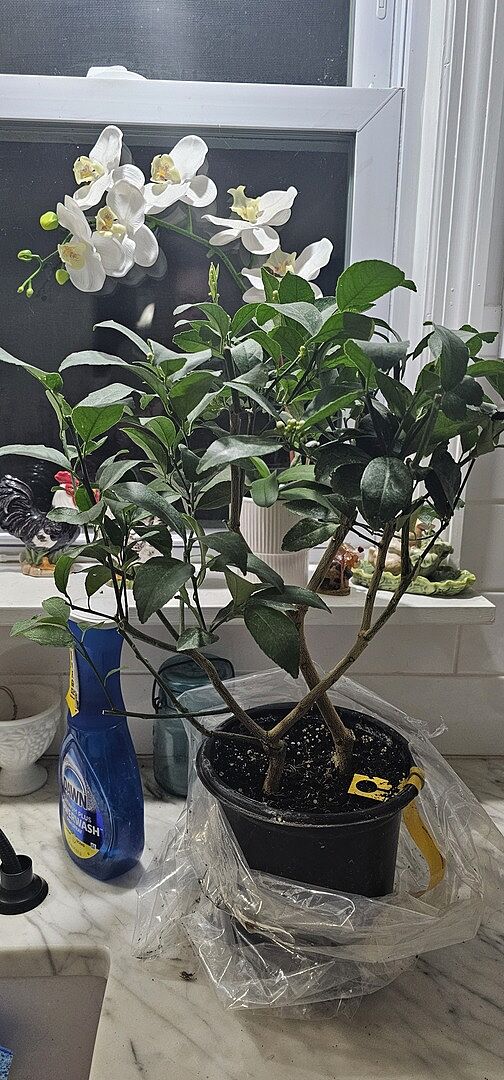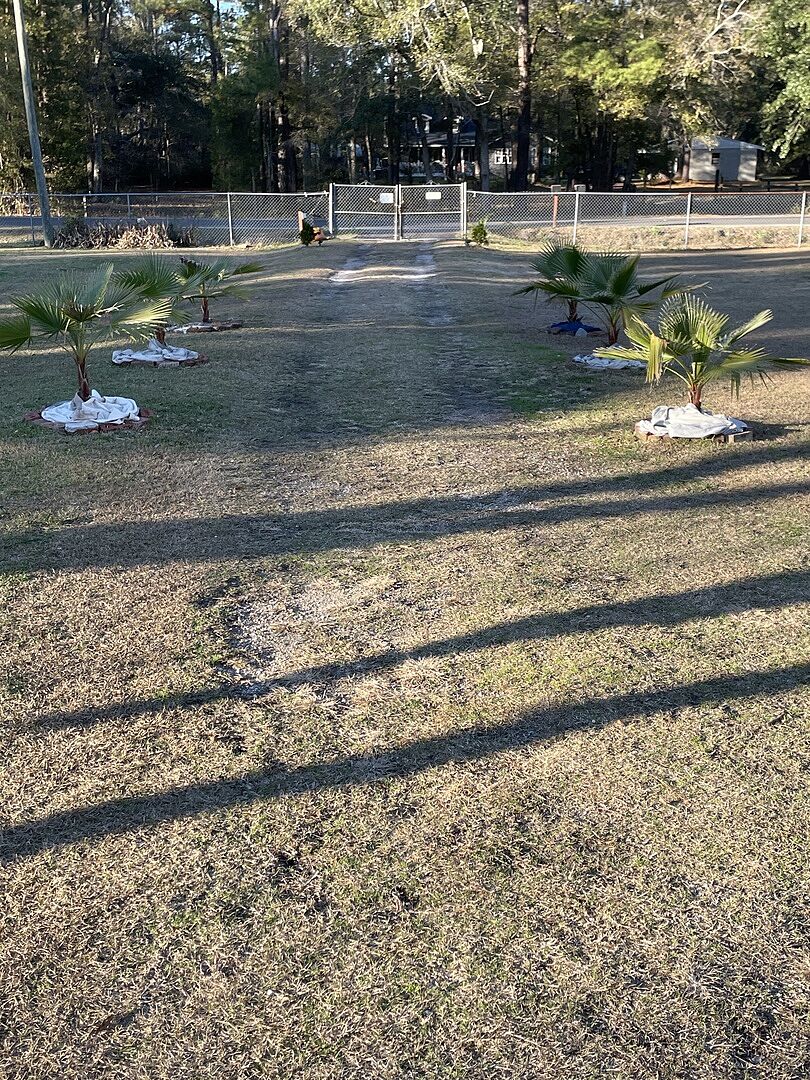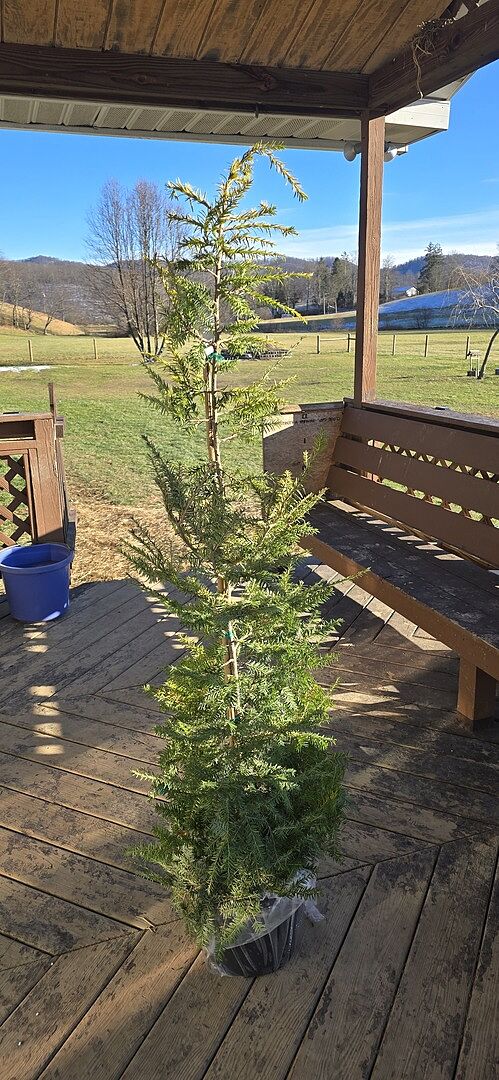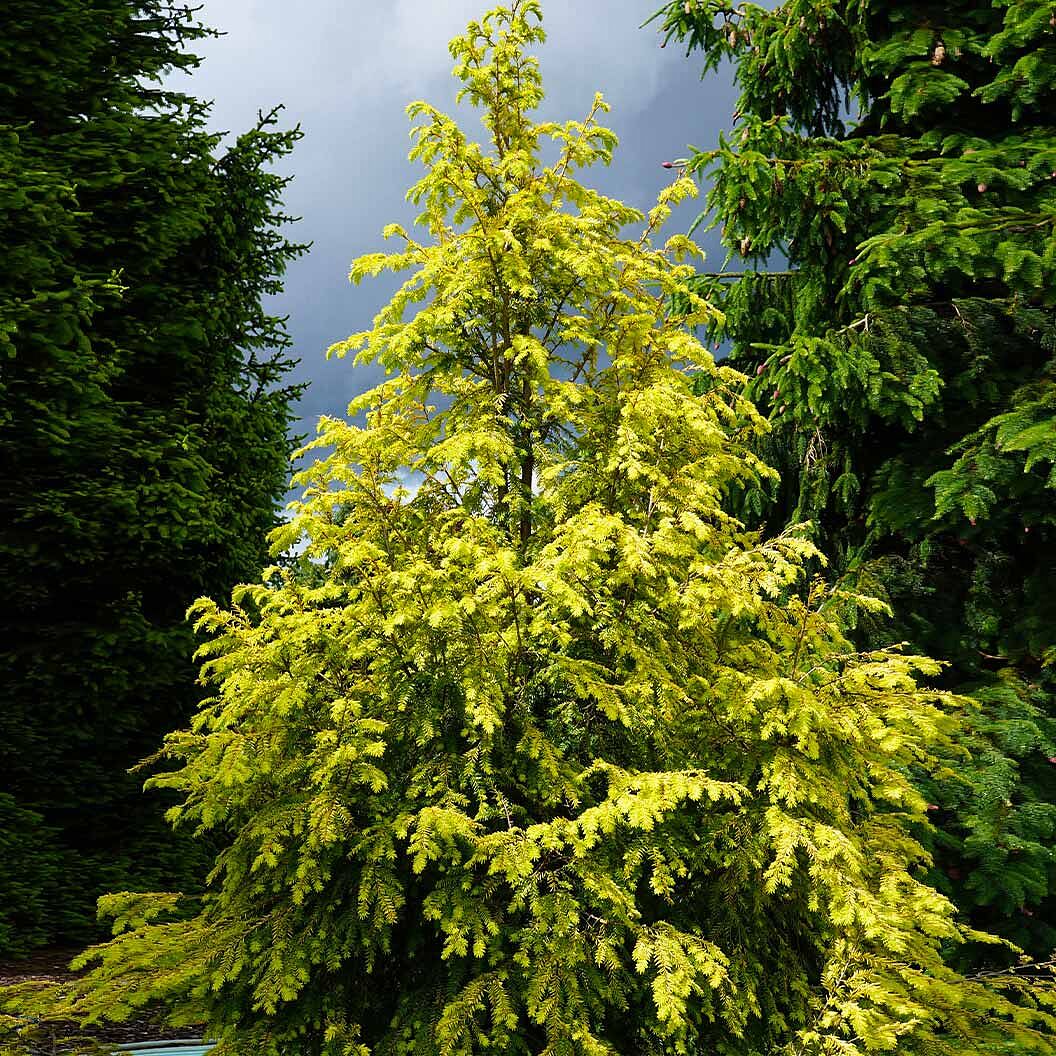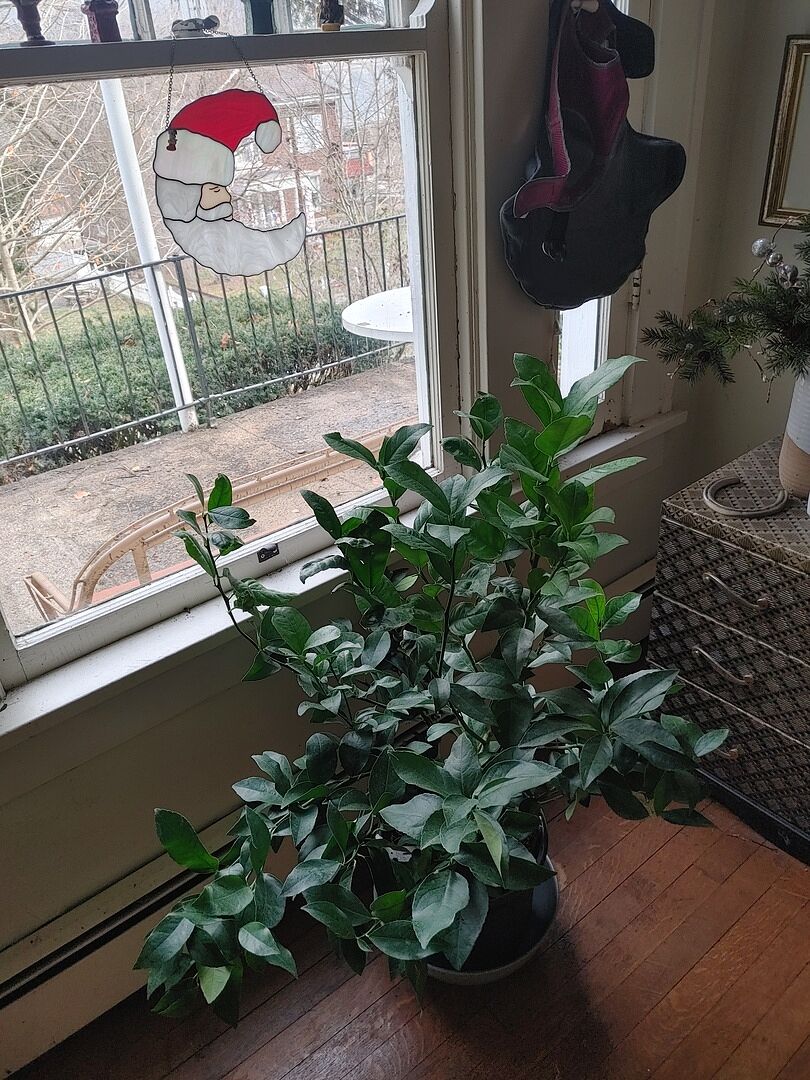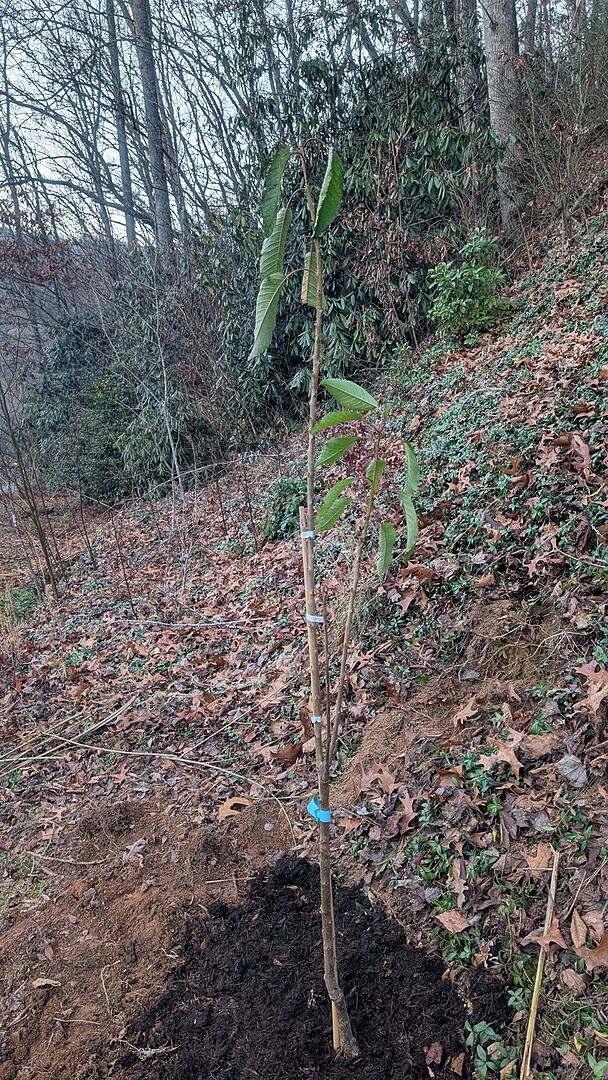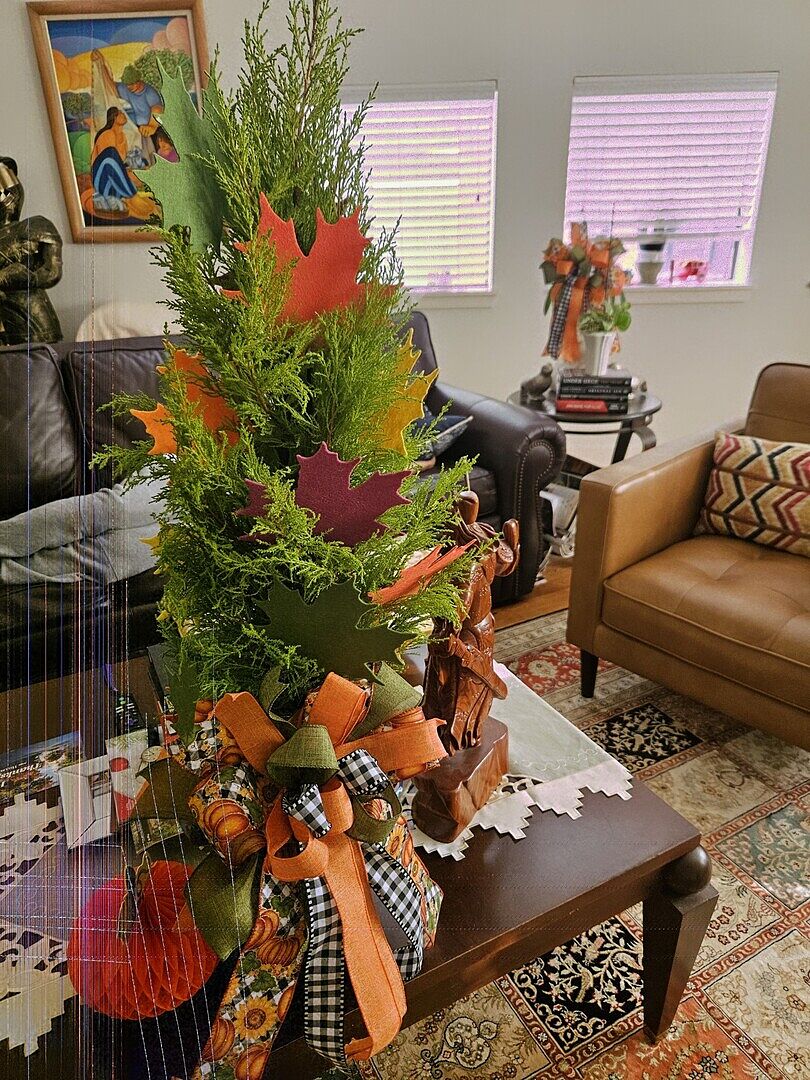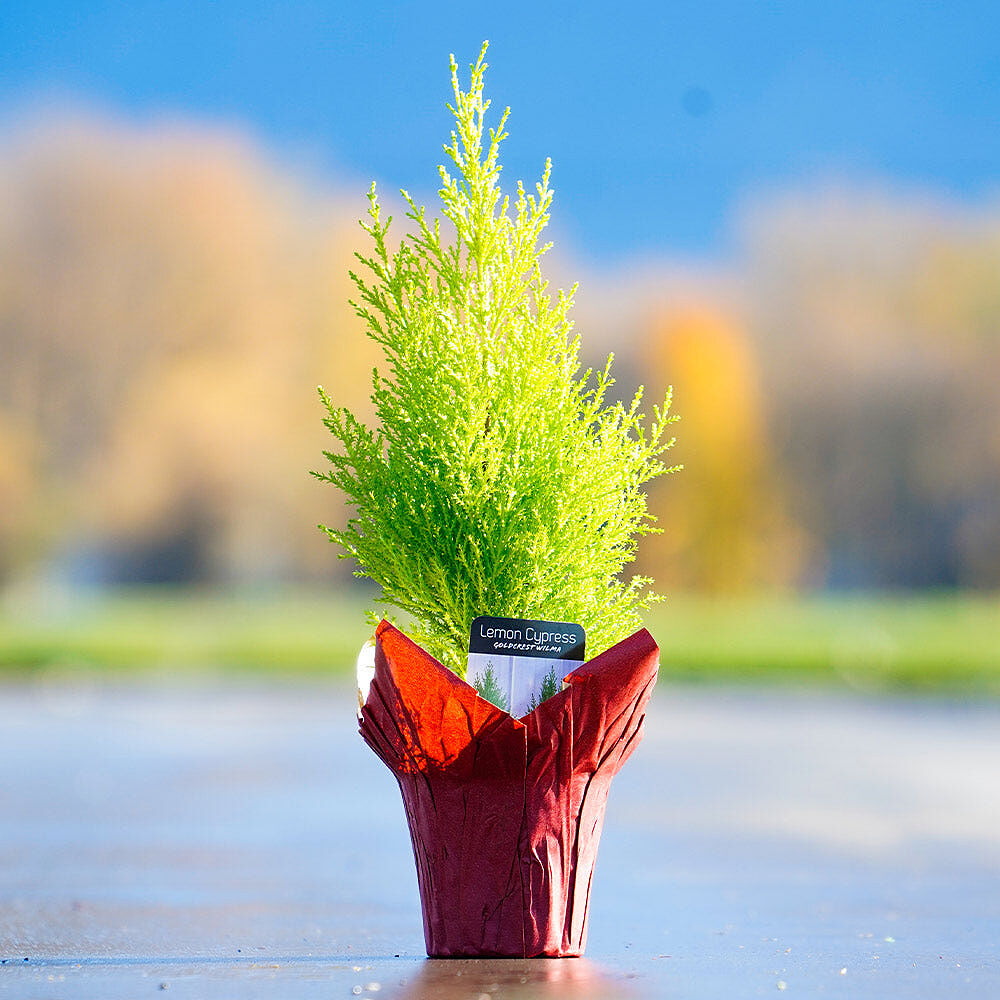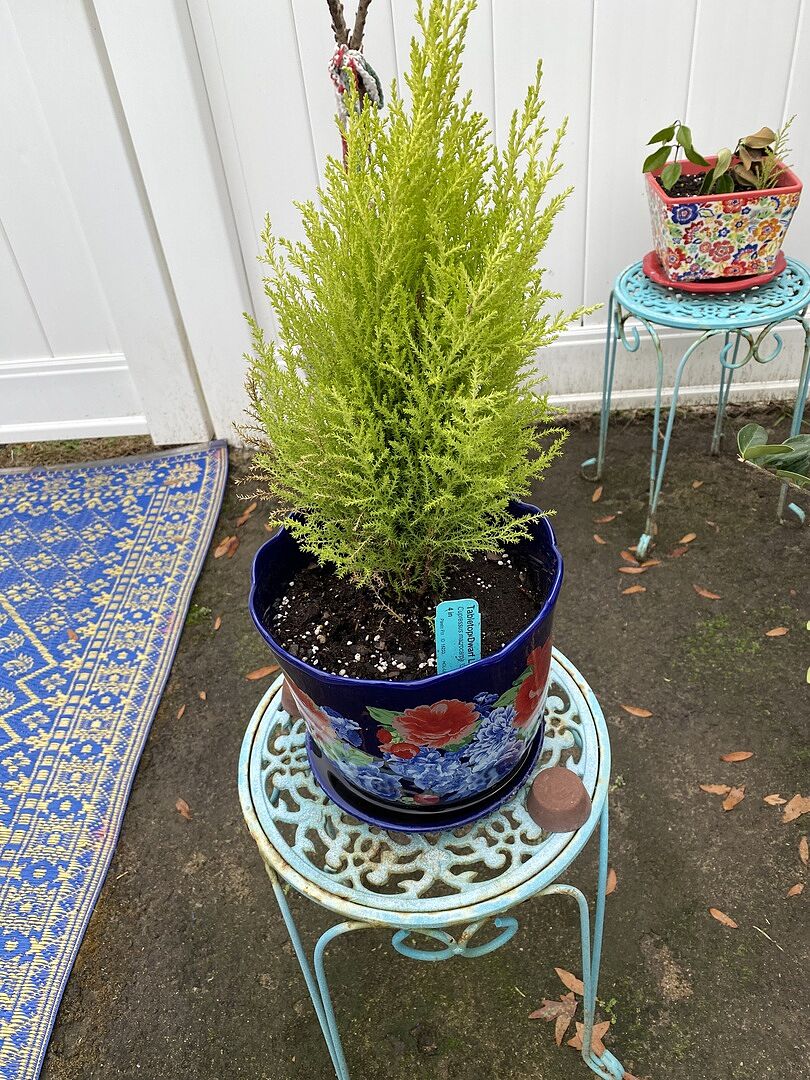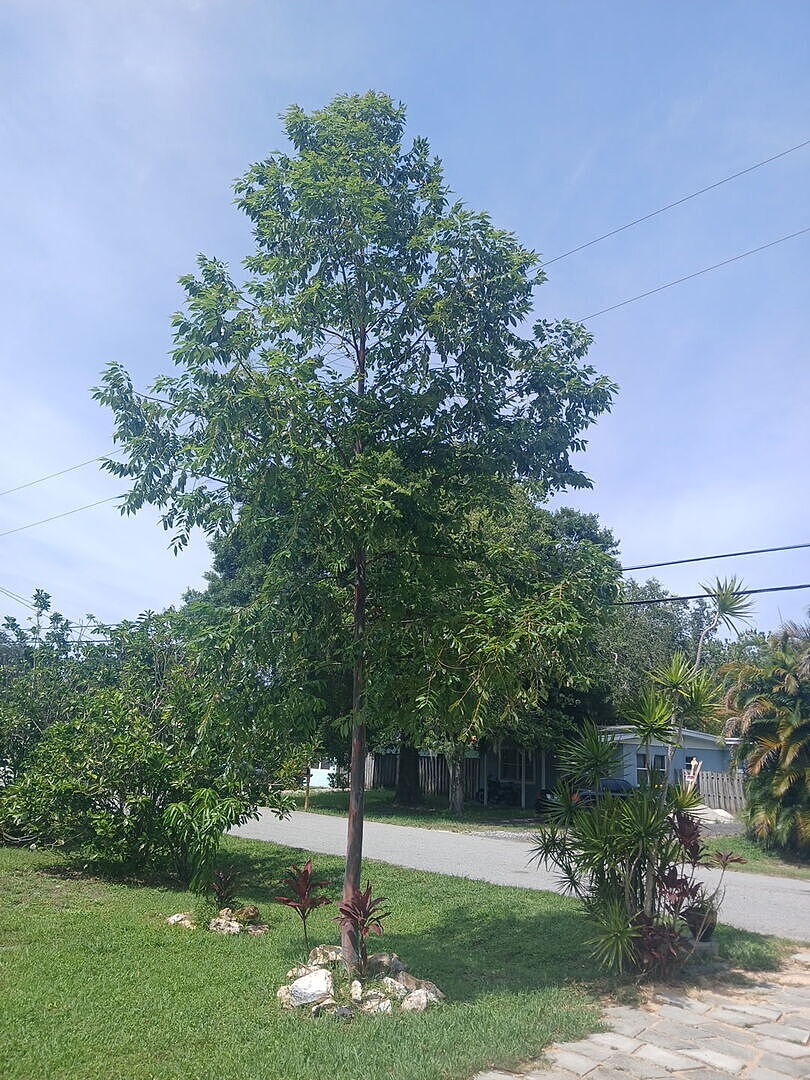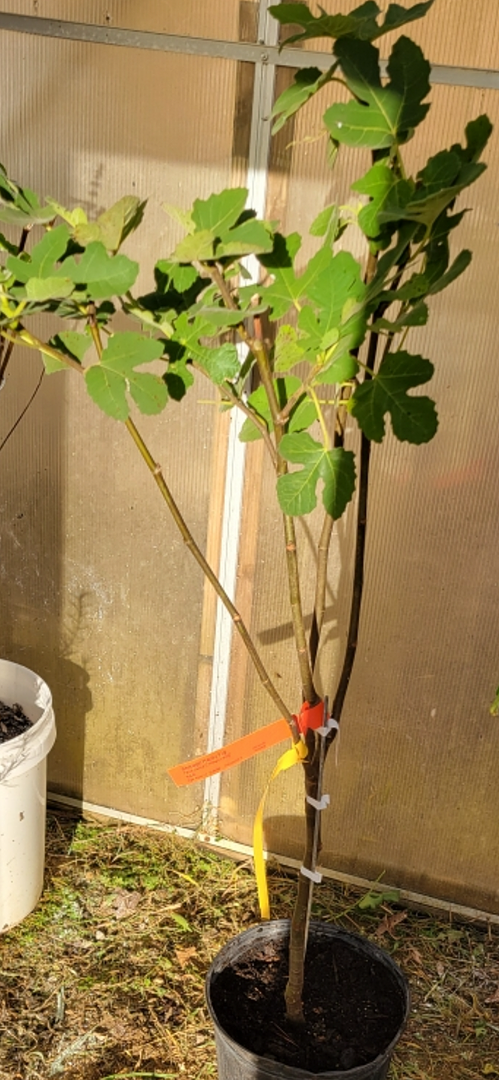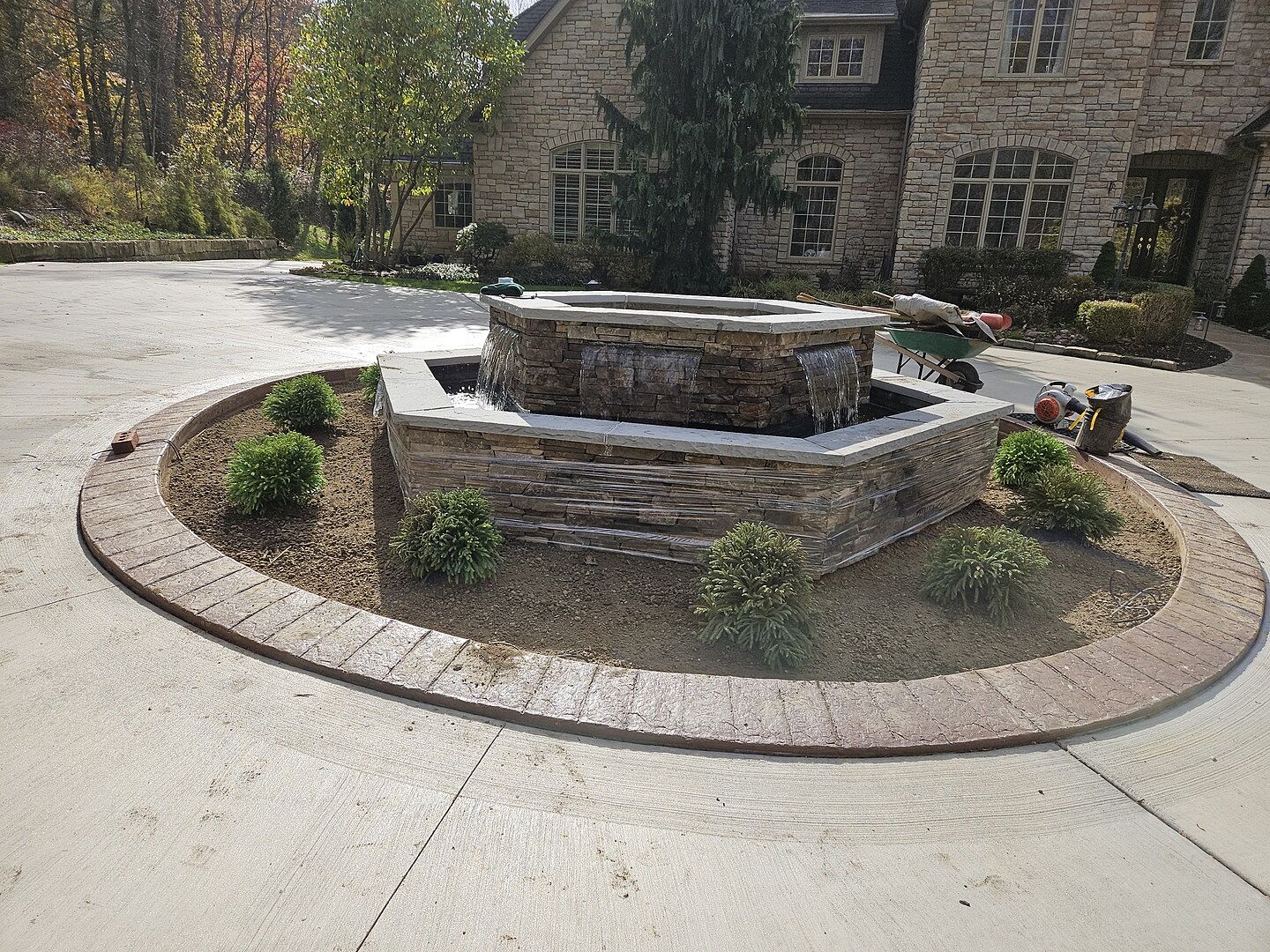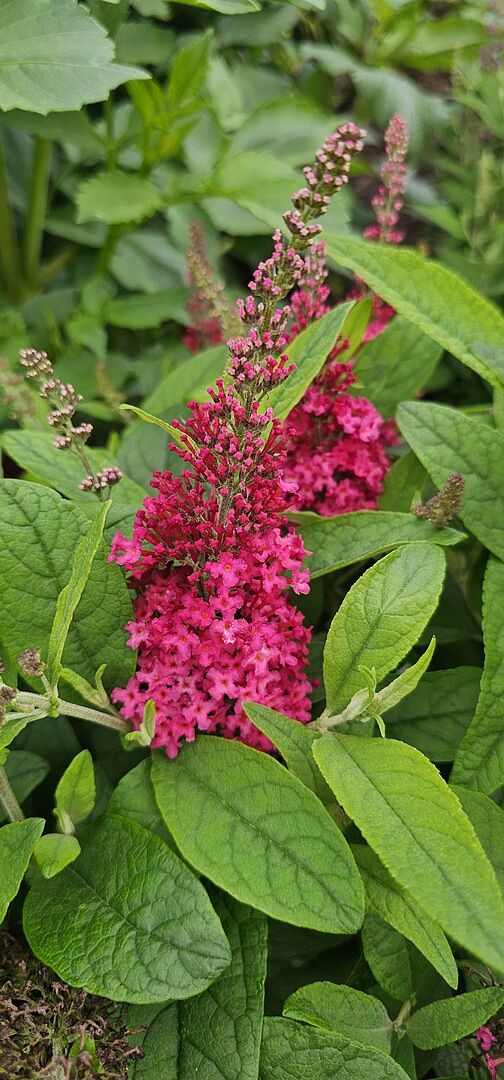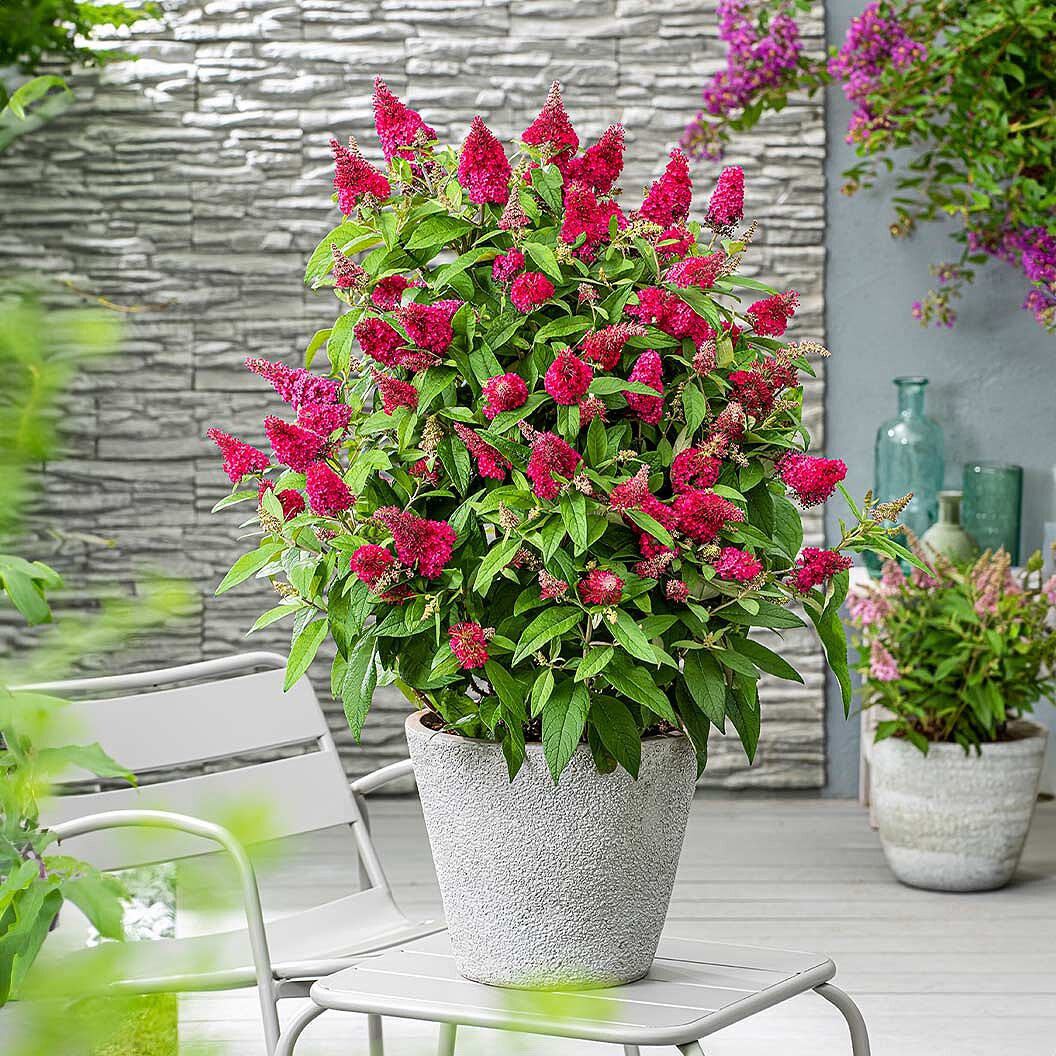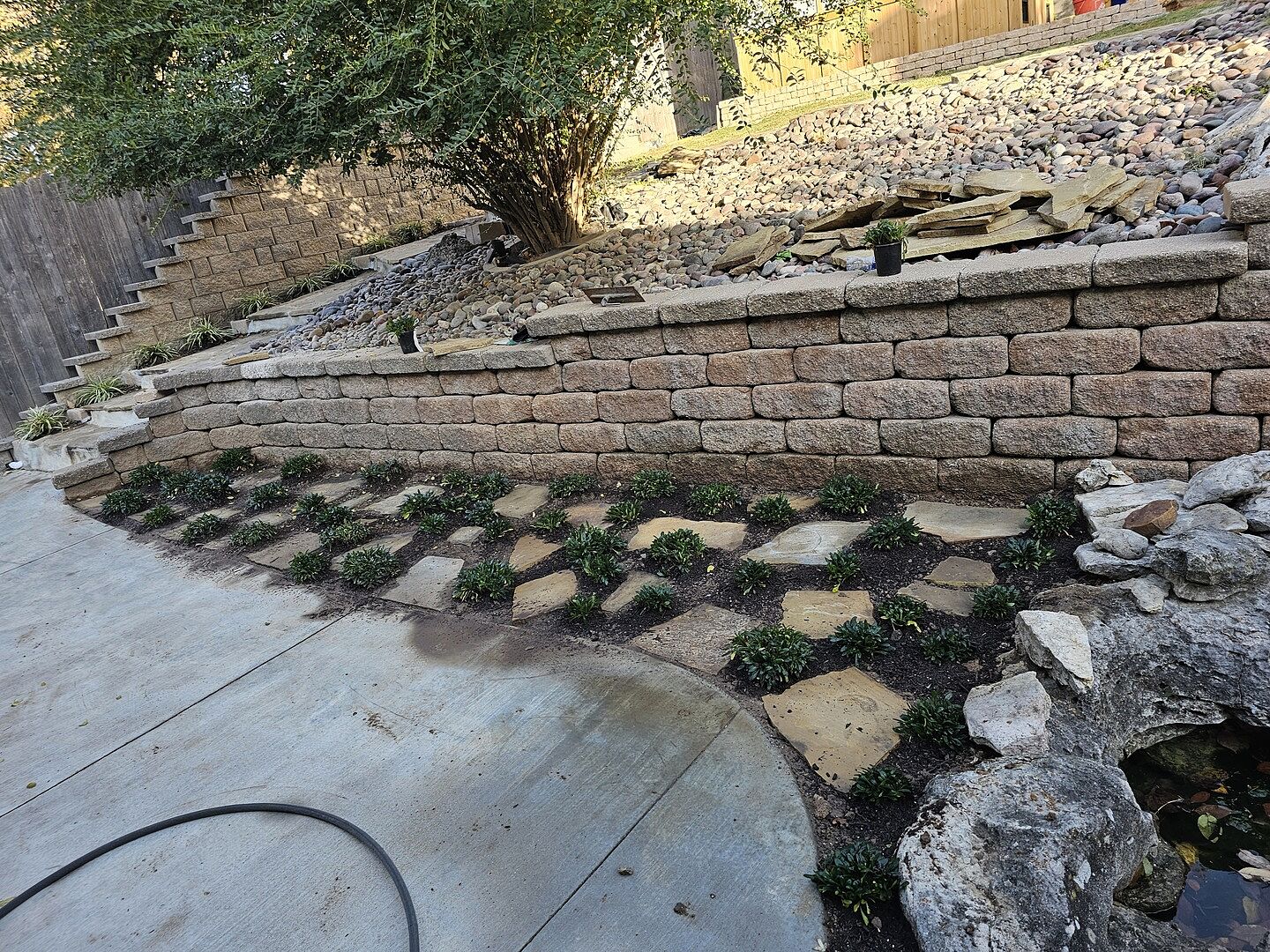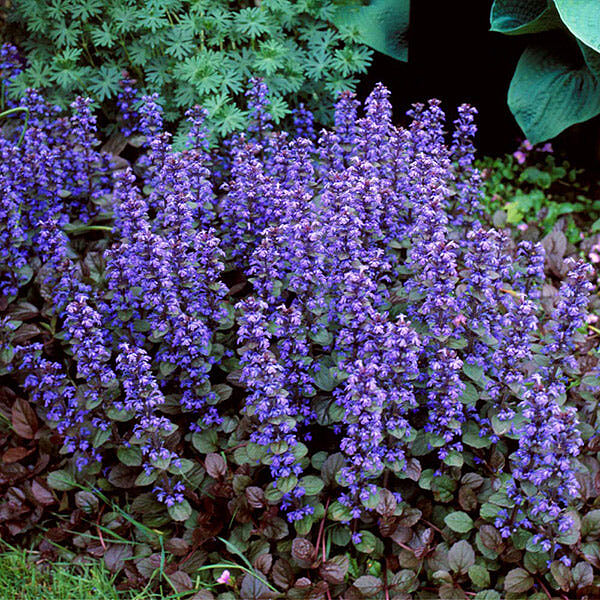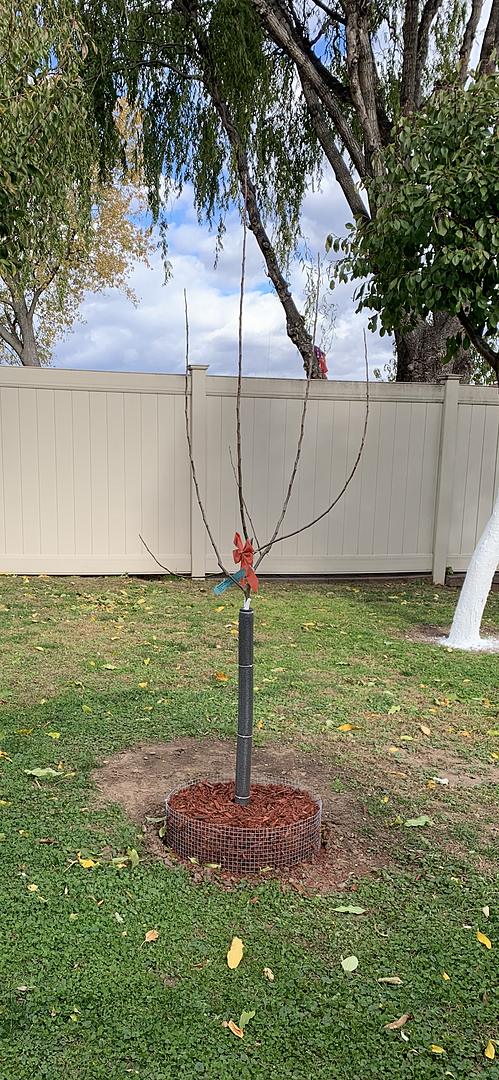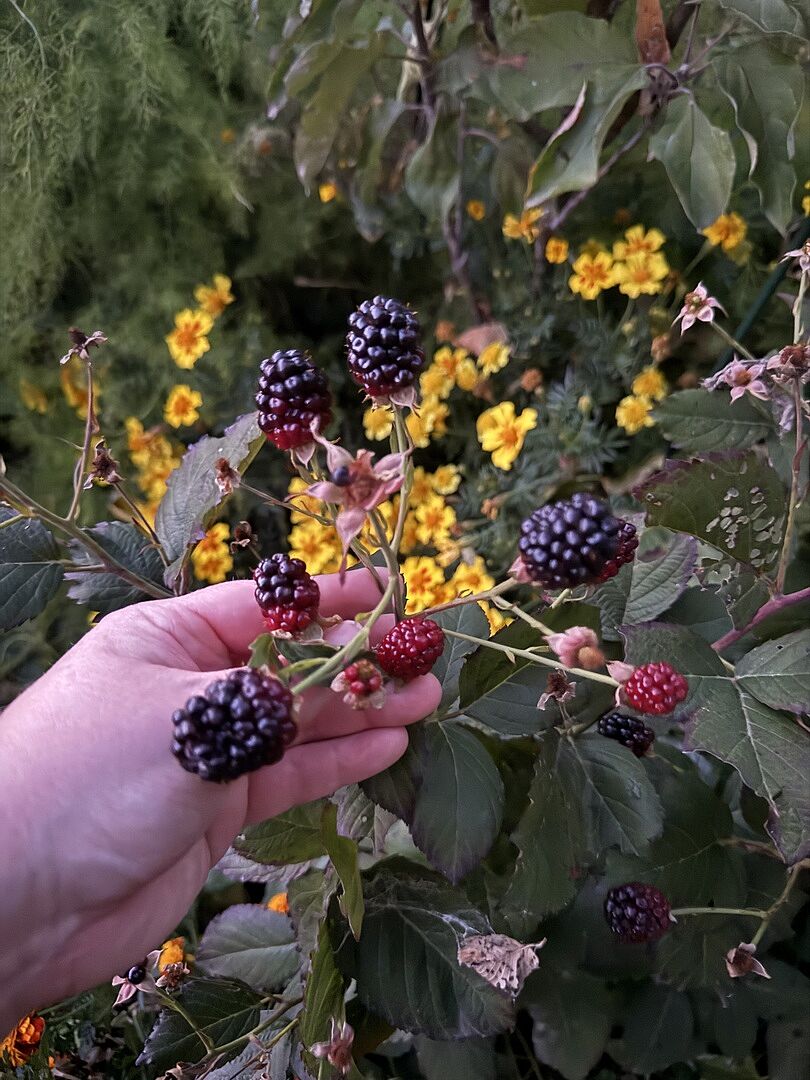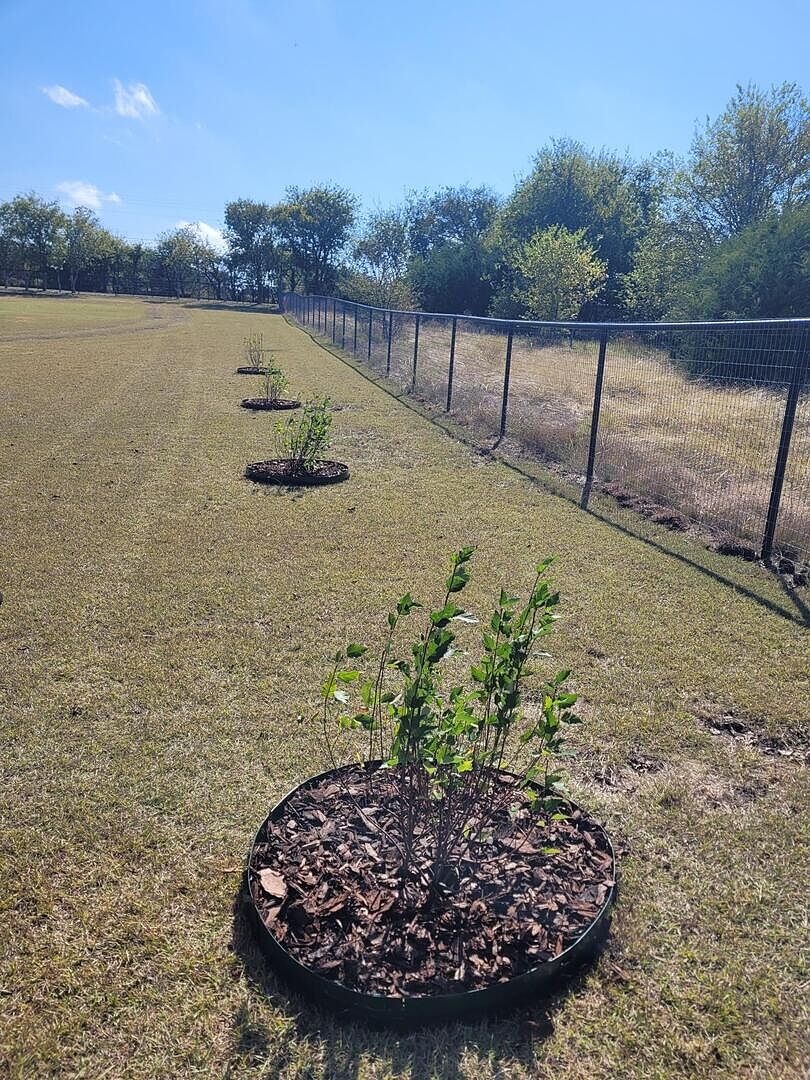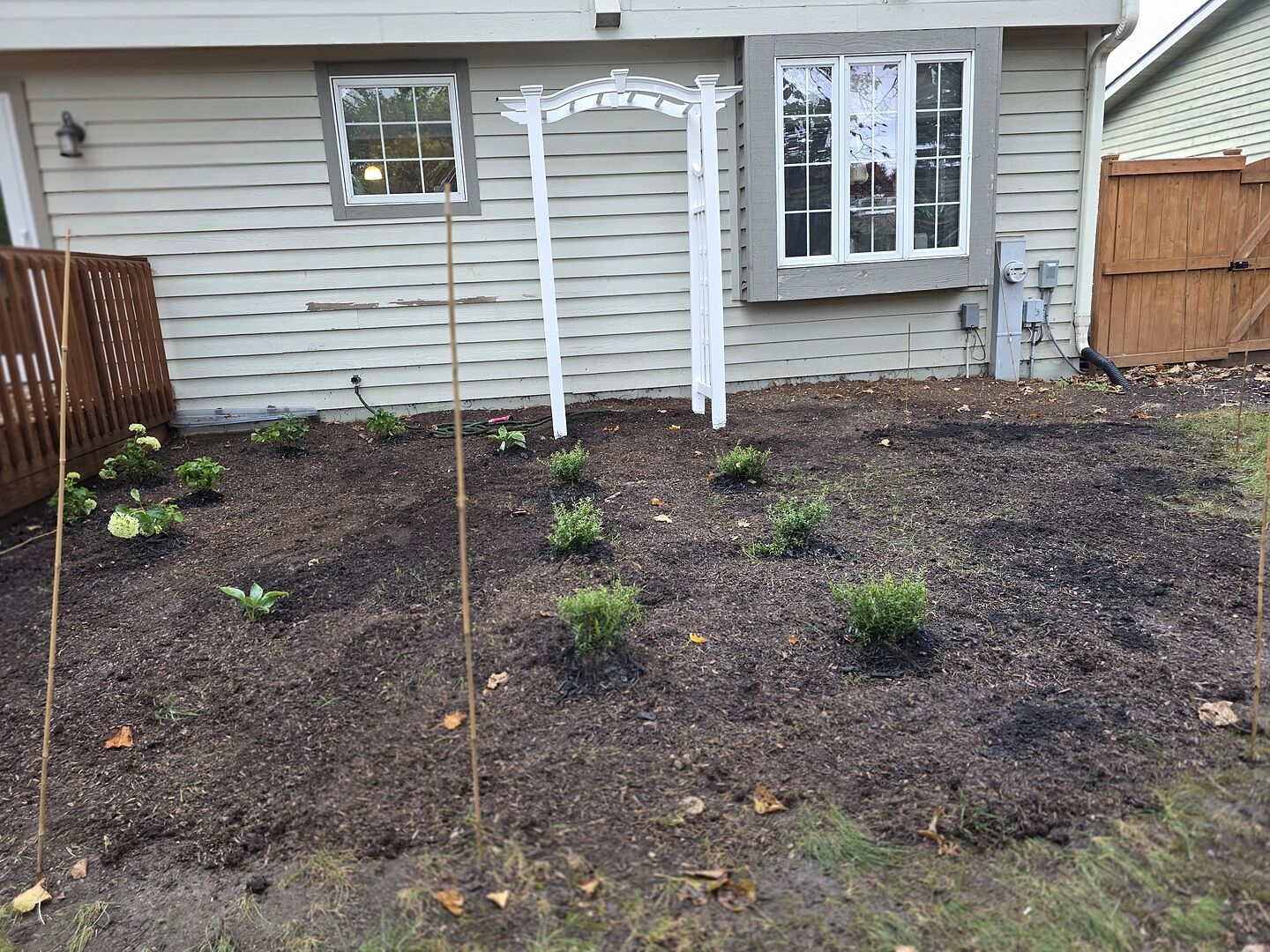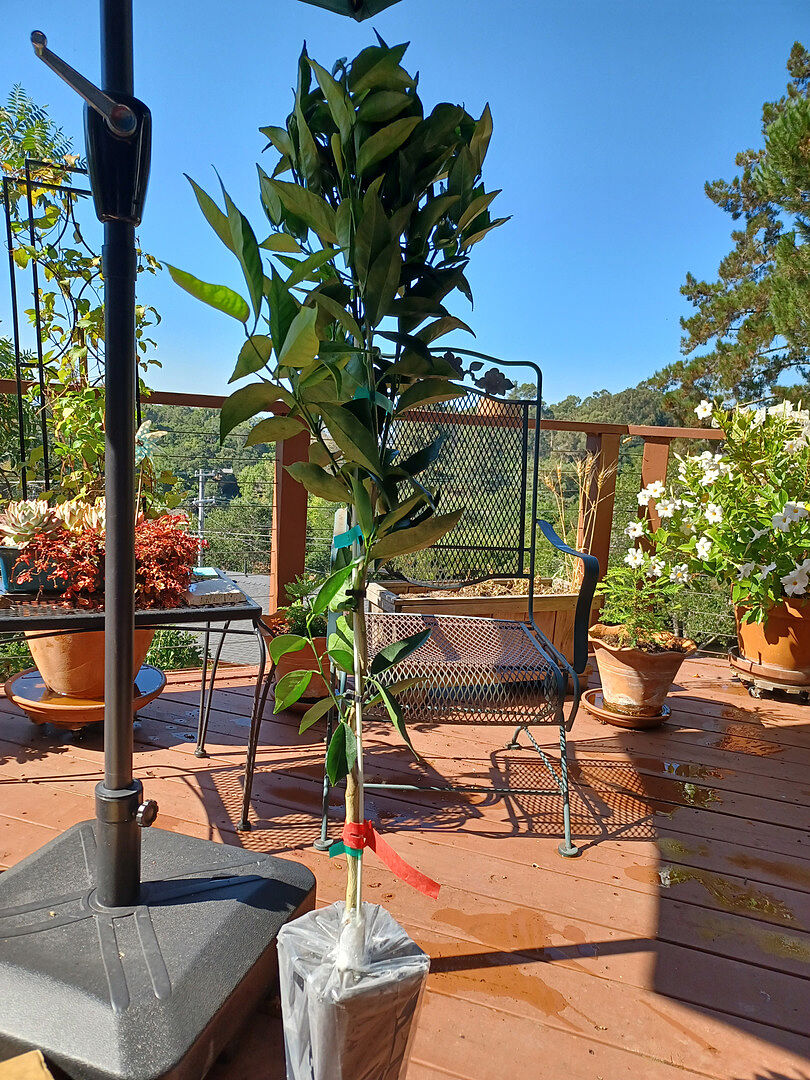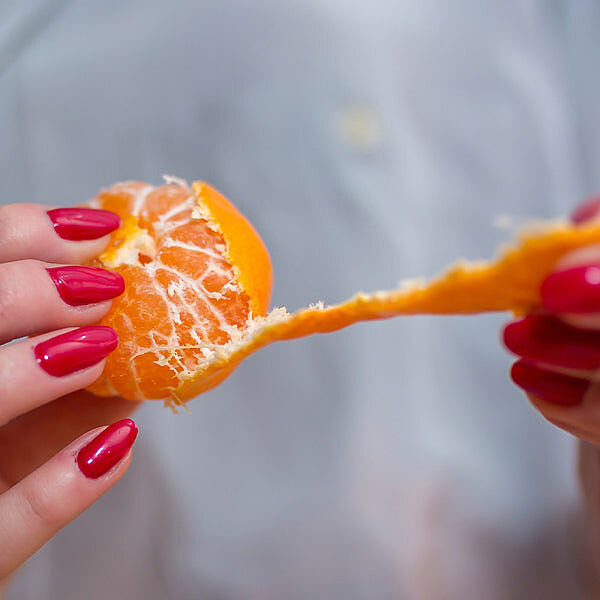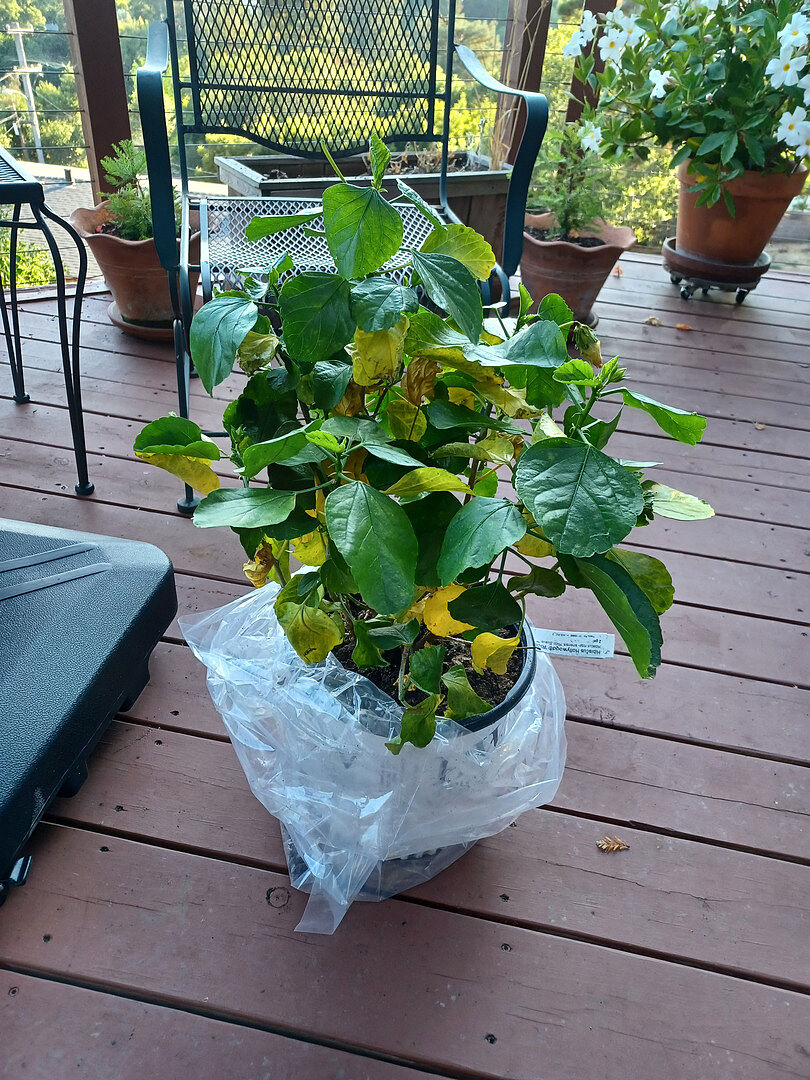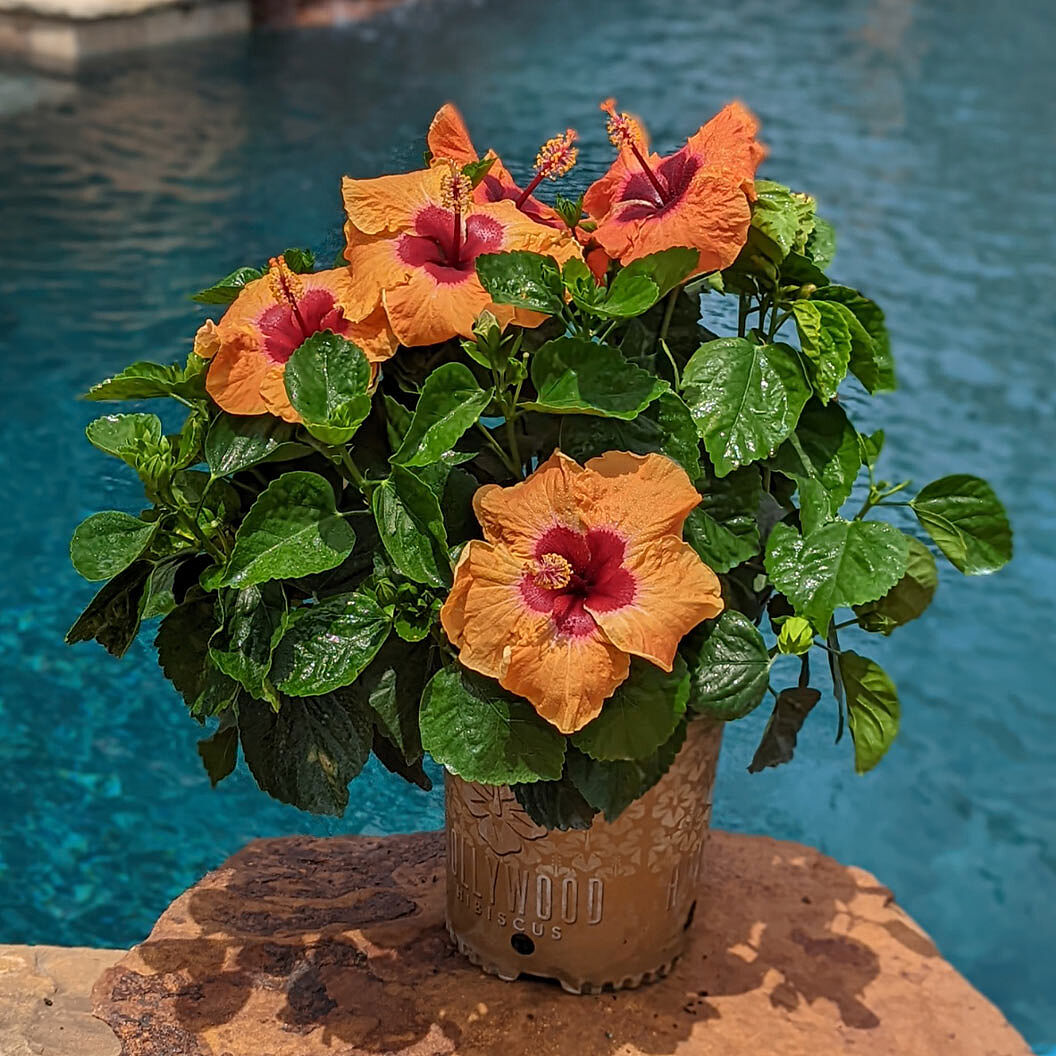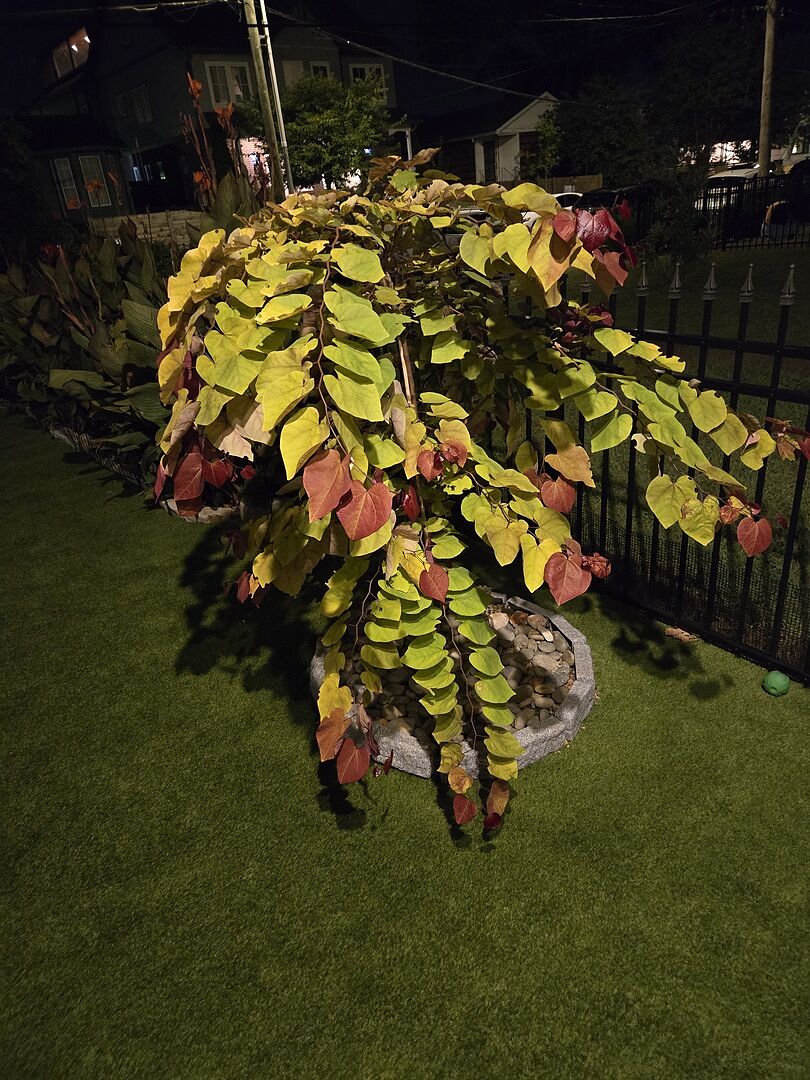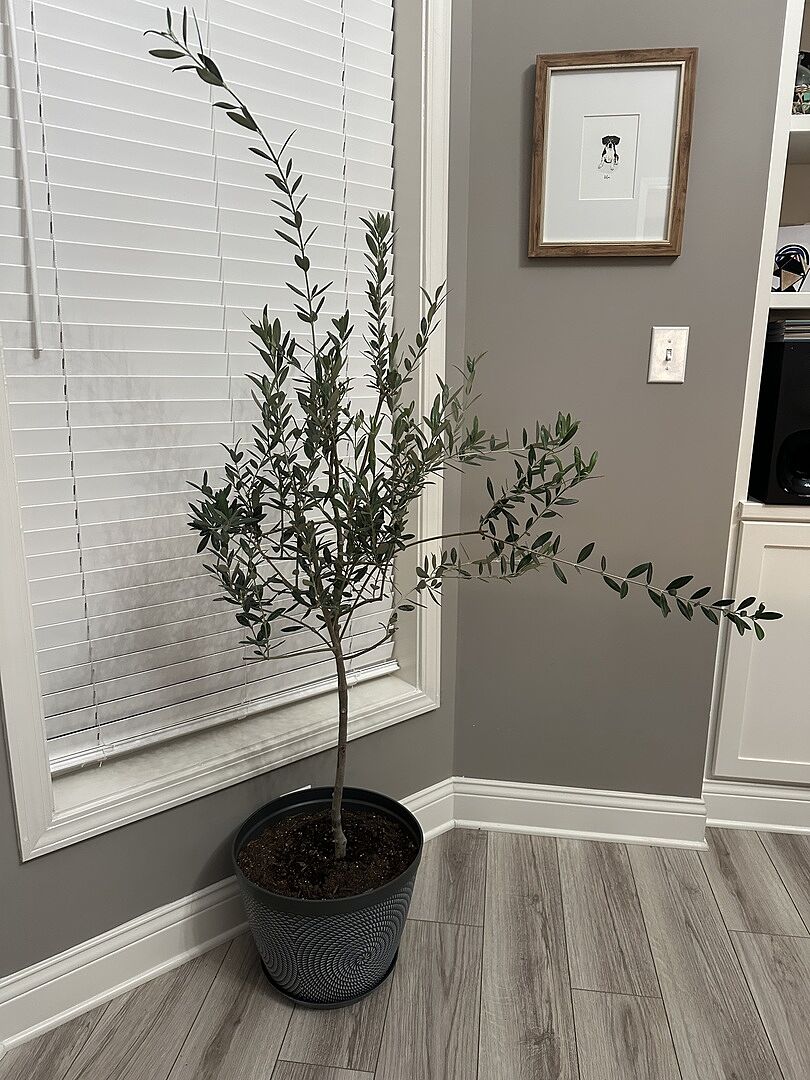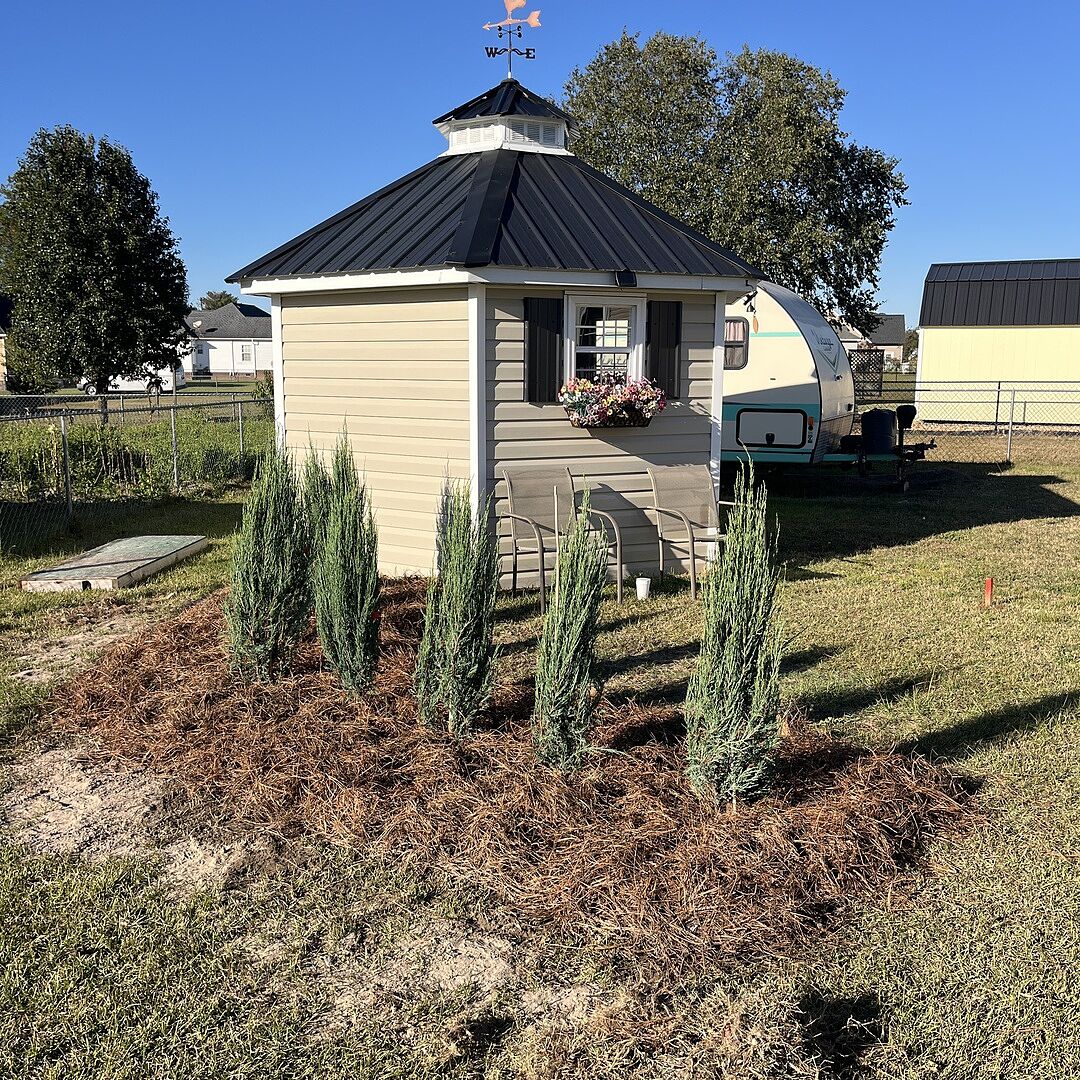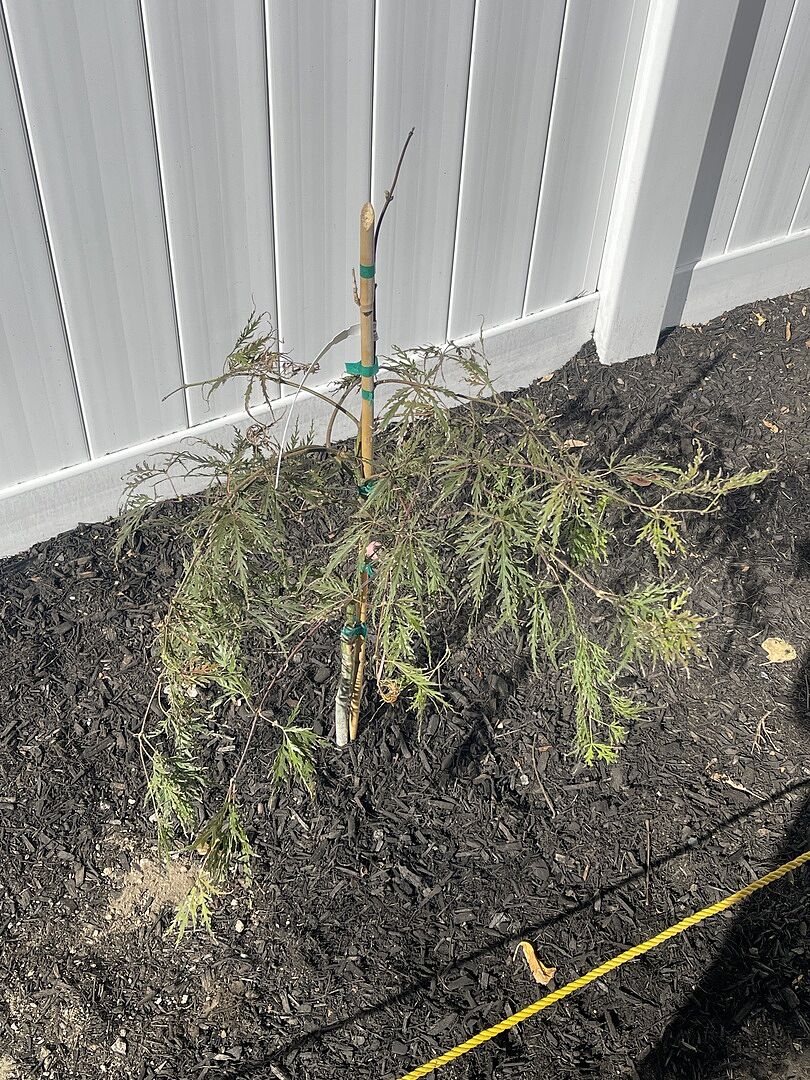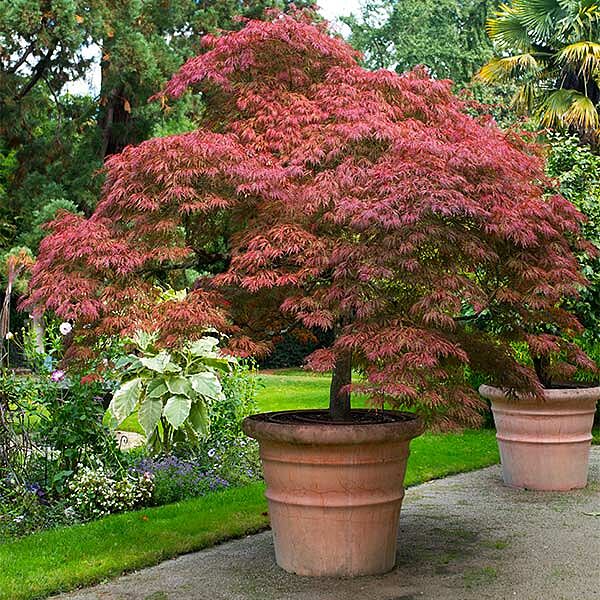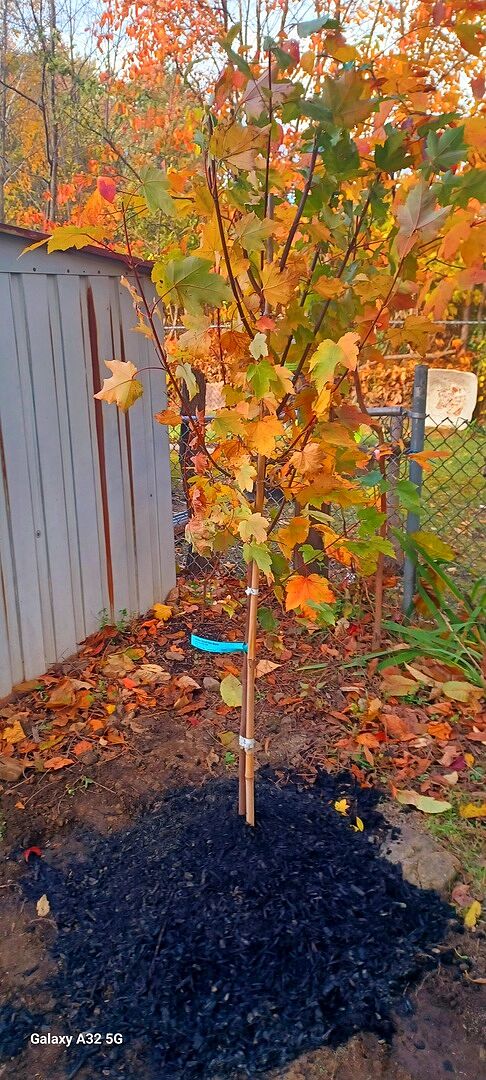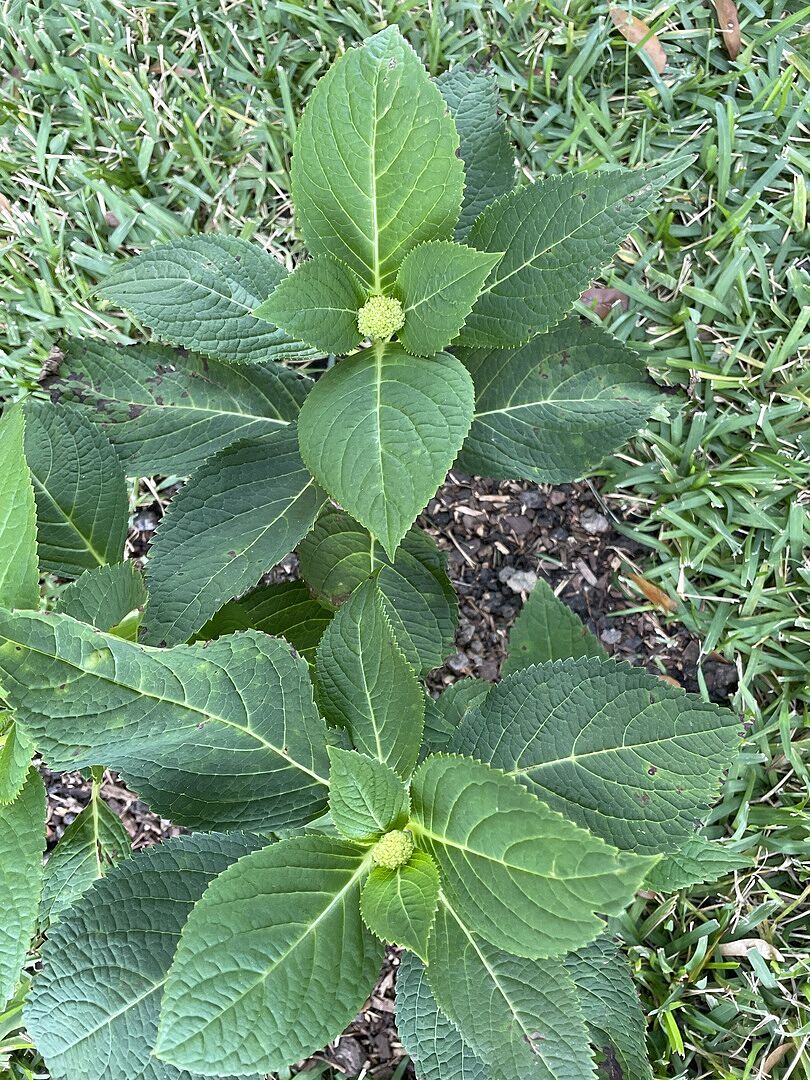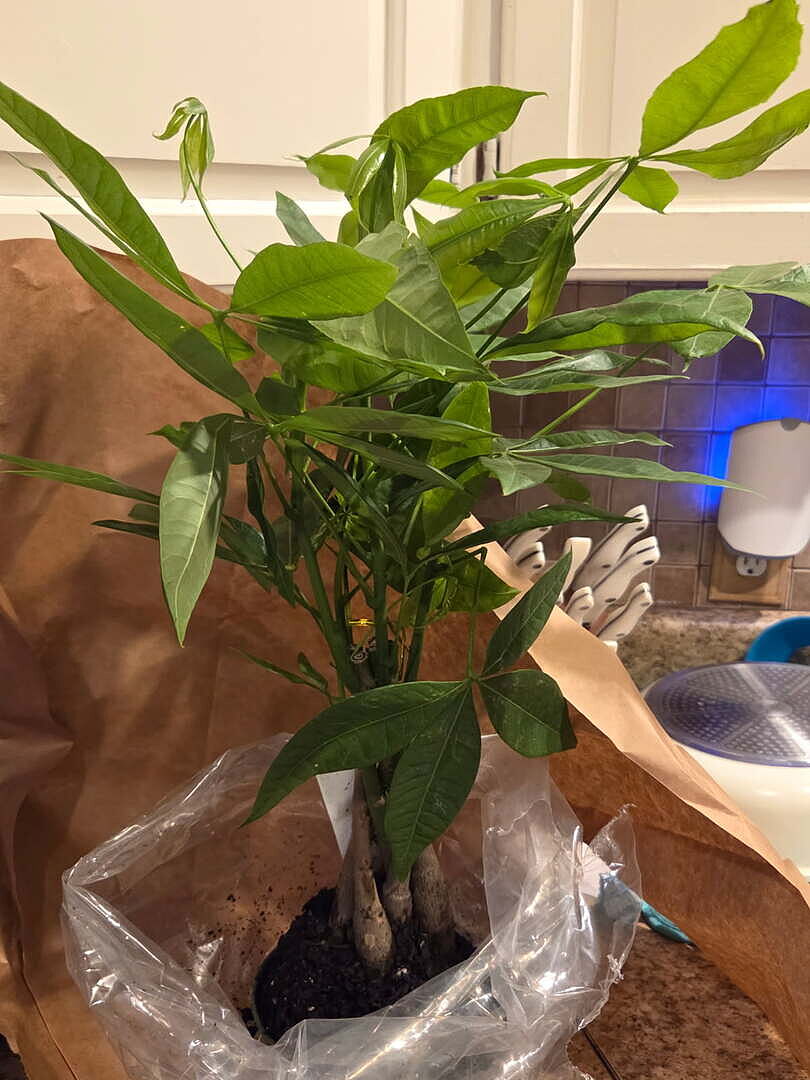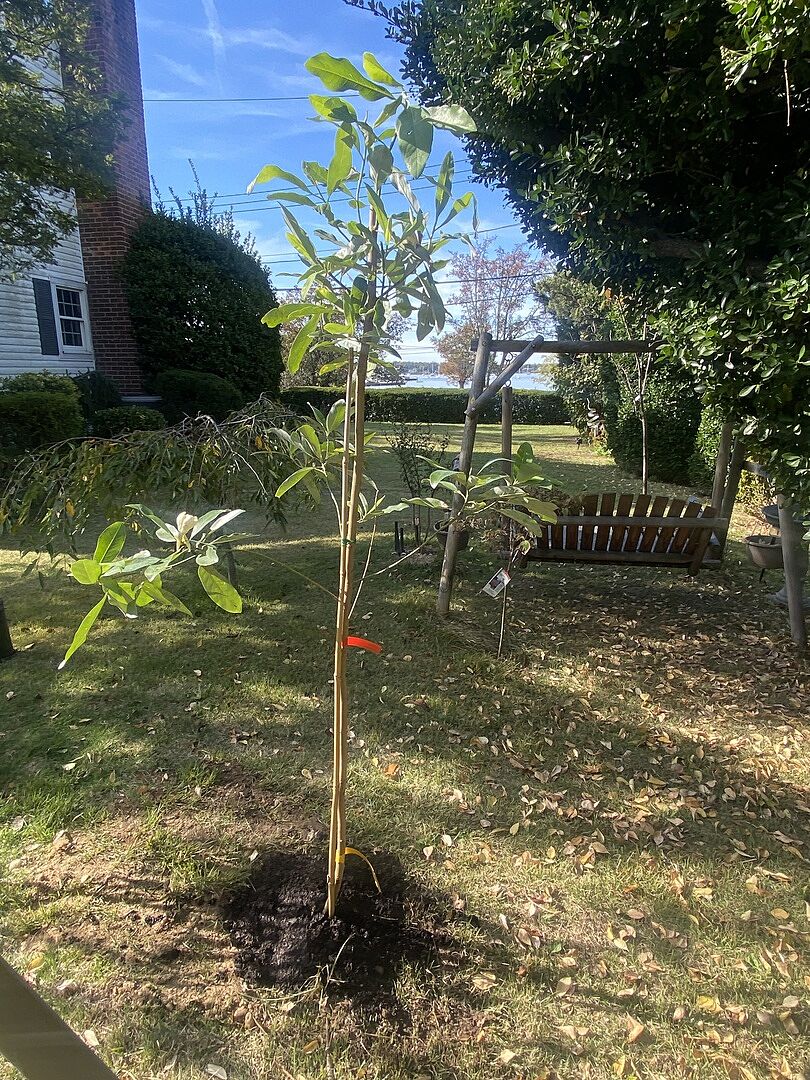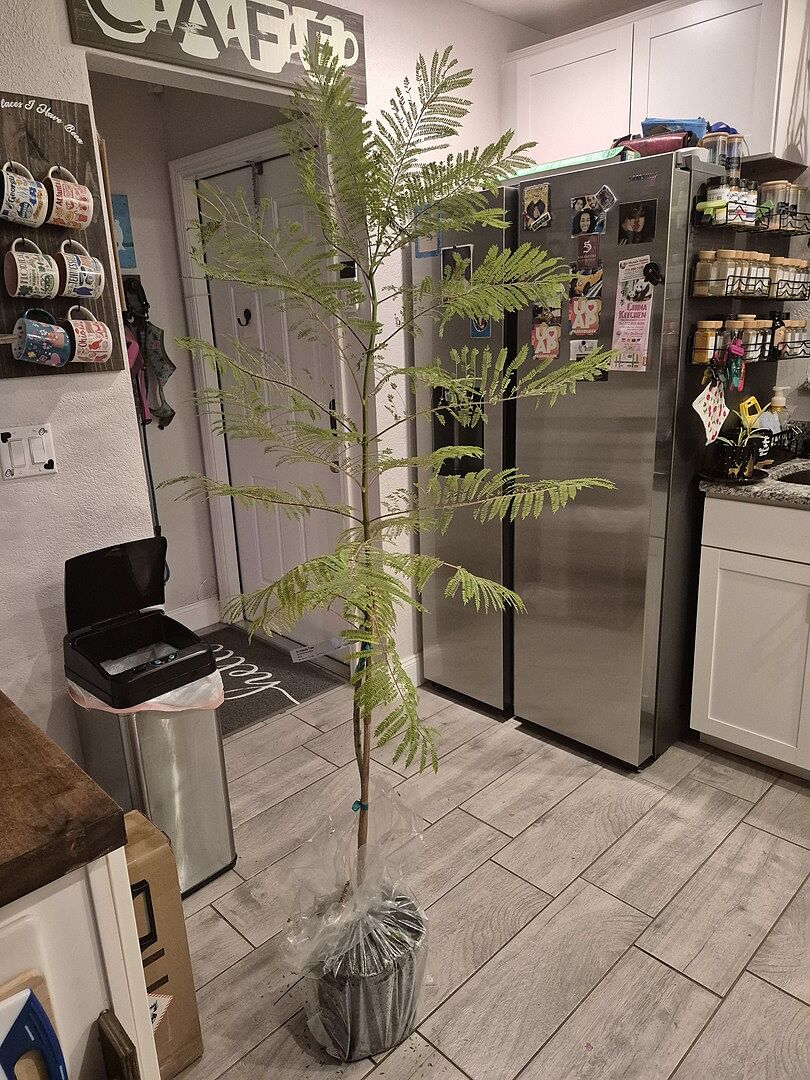Money Tree: Growing & Care Guide

Last updated: Sep 21 2023

This lucky tree has a long history of symbolism and good fortune for those with one in their home. Given as a gift to a loved one or for use in your own home, the Money Tree is a low-maintenance plant with a rich history. You’ll often see the Money Tree with a braided trunk; this is multiple plants braided together to symbolize health, wealth, and happiness, which makes it an ideal plant to give to others during celebrations. Similar to how bamboo, willows, and ficus trees have braided trunks, this won’t impact the growth of your Money Tree; it only adds to its interest.
Money Tree Care
Location
Since the Money Tree is a tropical plant, it likes to grow in temperatures ranging from 65-75℉. Those living in growing zones 10-12 can opt to grow their Money Tree outdoors, but it’s more commonly seen growing as a house plant. When deciding where to place your Money Tree, keep in mind that they can be particular when it comes to their surroundings. Avoid drafts and moving your plant around too often. Frequent moving can cause shock, including leaf drop. Transition your Money Tree very slowly and give it a time period of around 2 weeks for the plant to adjust if it’s necessary to move it. It's best to find its perfect spot and leave it there. Try to avoid transitioning your Money Tree indoors and out. No misting or spraying is necessary; if you notice curling leaves due to humidity, feel free to set a shallow pan of water nearby or place a humidifier in the room to give your plant a boost.
Light
Choose a southeast-facing window for your Money Tree. While some early morning direct sunlight is fine, bright, indirect light will work best. Your Money Tree should receive approximately 4-8 hours of sunlight per day. Too much direct sunlight can cause burning of the leaves. Pull the plant further into the room to adjust the amount of light and use other house plants to guide where it might fare best.
Watering
The swollen trunks of the Money Tree store water. As such, the Money Tree actually prefers drier soil when growing in containers due to this adaptation to store water. Money Trees are very susceptible to root rot, which occurs from a fungus taking hold when the soil is overwatered. The best way to avoid root rot or other fungal issues is to set a watering schedule and stick to it. The frequency of watering will vary, but if you are ever unsure if your plant needs water, feel the soil to check. Only water when the soil is dry a few inches down in the pot. For beginners or those with many house plants, a water meter is recommended to get this balance right. Depending on lighting and interior conditions, the Money Tree will need watering approximately every 1-2 weeks. Water at the soil line and let the water fully saturate the soil until it runs out the bottom of the pot. You can also bottom water your Money Tree by setting the plant in its container in a basin of water for 20 minutes and letting its capillary action do the work.
Tips for Repotting
The Money Tree only needs repotting every 2-3 years. You’ll know it’s time because you’ll see roots growing out of the drainage holes or roots circling around the pot. When it comes time to repot your Money Tree, check the base of it to make sure no rubber band is left behind from when the tree was first braided; your tree will no longer need it to hold its form.
Choose a container about 2 inches larger in diameter than the current one it’s in, making sure it’s just as deep, if not deeper. If you wish to continue braiding the growing plant, it’s better to use young, flexible growth that’s still strong enough that it won’t break so the growth of the plant isn’t affected. Don’t weave the trunks too tightly, as their diameters will increase with growth. Stop braiding when leaves appear.
Fertilizing
Start fertilizing your tree in the springtime. Any general house plant fertilizer is okay. We suggest using a liquid formula for the most effortless absorption. As with any product used, please read the label before application to understand the frequency and how much you should use for your plant. Stop fertilizing in wintertime or when the plant’s not actively growing.
Containers and Planting
The ideal soil mix is rich in nutrients that drain freely. Avoid using any outdoor soil or pre-mixed soil with clay. There are many pre-made soil mixes available that are ideal for the Money Tree. If you have existing potting soil and are wondering if it's a great fit, try mixing some succulent or cactus soil into it to make it drain better. When wet, your soil should have a crumbly consistency when squeezed together in your fist.
Avoid adding any rocks to the bottom of your pot. The rocks change the soil’s texture, causing a “perched water table.” Water that’s being held in the saturated soil doesn’t want to drain into the gravel/rocks, so the bottom roots of a plant can be left sitting in soil that’s too wet or moist. It’s best to keep the soil mixture uniform in the entire pot and avoid any containers with watering basins. Stick to your basic terracotta pot for this one, or use a plastic container with plenty of drainage holes. Remember, you can always place a more aesthetic container over the actual one to make it fit your style without sacrificing the health of your Money Tree!
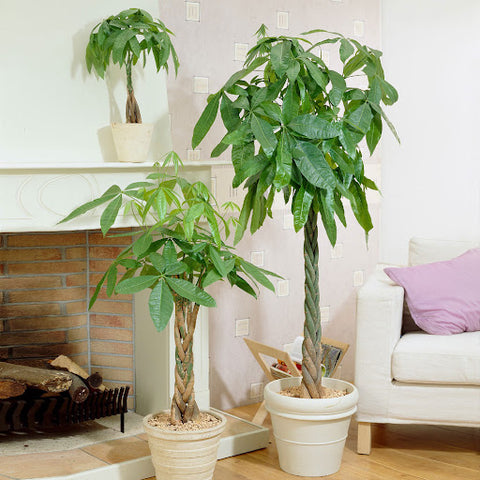
Suggested Uses
Used as a tabletop plant or a floor plant, the Money Tree’s known for its flexibility, fitting any landscape or style. It’s also known to do well in offices, as it doesn't mind artificial light and can grow well under fluorescents. In addition, the Money Tree is a perfect introduction to bonsai, as the tree resembles a full-grown one in miniature form. With the Money Tree, you can get the bonsai look without the years of dedication and shaping that other trees take.
History and Origin of the Money Tree
The Money Tree is native to swamps and rainforests ranging from Mexico to Northern South America. The name “Money Tree” comes from the story of a poor man discovering this tree while praying for money. He took the plant home and made money by selling its seeds. According to the practice of Feng Shui, the Money Tree supposedly brings good luck to those who have it at home or in their office. Since its roasted nuts supposedly taste like chestnuts and the botanical name species “aquatica” refers to its habit of growing near water, it’s also often known by its other name, Water Chestnut.
The Money Tree can grow up to 59 feet tall in its native habitat. You can expect it to top out at 10’ feet tall or smaller indoors, as it often grows to fit the container it is in. Its five leaves are thought to represent earth, fire, water, wind, and metal. If your Money Tree has a leaf grouping of seven leaves, however, that’s extra lucky!
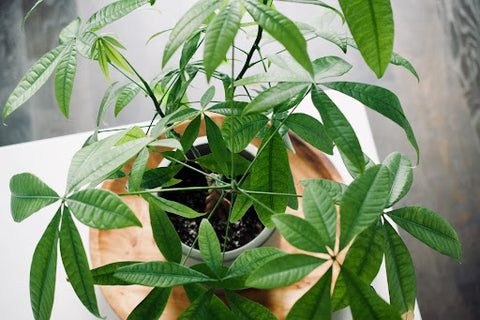
Troubleshooting and Tips
Growing Tips
- Rotate the Money Tree every time it’s watered to keep even growth and avoid leaning.
- Check your plant monthly for pests to stay on top of any unwelcome visitors. Make sure to check under the leaves and near the joints of the plants where the leaves attach.
- Dust your plant’s leaves off occasionally with a clean, soft rag.
Common Pests
|
Pests |
What They Look Like |
Symptoms on the Plant |
|
Spider Mites |
Tiny specks of white or brown in a web. The webbing occurs between the parts of the plant and is a dead giveaway that you have mites. |
Webbing between leaves and trunk. Tiny black-brown spots on leaves. |
|
Aphids |
Round bodies with a range in colors from green, yellow, black, and red. They resemble a small grain of rice and are found on the leaves of the plant. |
Curling of new leaves, brown spots on existing leaves. |
|
Mealy Bugs |
Appear as small, white, fluffy spots, normally gathered around the veins or undersides of leaves. |
Shriveled, brown, necrotic leaves. |
No need to panic if you see a pest on your Money Tree, as they are quite common and can be dealt with easily. Follow these quick tips:
- Isolate your Money Tree from others to avoid pests from spreading. Don’t worry about your house or pets, as these pests only like plants and won’t stick around indoors.
- Physically remove any visible pests you see with rubbing alcohol. Take a cotton ball with 70% alcohol on it and rub the plant to dislodge and kill any pests you see.
- Safeguard your plant and others by spraying insecticidal soap, horticultural oil, or neem oil.
- Continue monitoring for the next few weeks to make sure you got all of the pests and replace any plants you moved.
FGT Pro Tip: We suggest spraying in an area with great ventilation or outside, as they can have a strong smell when applied. As always, read the label and avoid setting your plant in direct sunlight after spraying. Move indoors once dry.
Common Issues
The first sign that your Money Plant needs help will often be on its leaves.
For yellowing leaves, first rule out if they are older leaves. Once you have done that, take a look at the roots. Yellowing leaves indicates something’s up with the root system. Check if the plant is rootbound and needs to be repotted or if you have a case of root rot. Root rot will appear in overly wet soils and has roots that appear squishy, black, and shriveled. If you do find signs of root rot, you will need to repot your plant with fresh soil and a washed pot to stop the spread. Feel free to trim off any dead roots that you find and rinse off any leftover soil before replanting.
For leaves falling off, look at the location of the leaf and the season. It’s common for older leaves or ones on the bottom to drop off. It’s also common for some leaves to drop when there is a sudden change in temperatures like a seasonal change or when you move your plant. While some leaves will fall, the Money Tree is an evergreen and should never lose all of its leaves.
For dry or drooping leaves, check the moisture level in the soil. This is often a sign that the plant needs moisture and might even show a shriveled or wrinkled trunk. Establish a watering schedule and stick to it to correct this problem and your plant will recover, grow new leaves, and fill out its trunk. If only the edges or the top leaves look brown or crispy, that is a sign of too much direct light. Relocate your Money Tree out of direct light or place a curtain or another plant nearby to help break up the light.
We understand that interpreting plant symptoms is difficult, so please reach out if you need help and check out this visual diagnosing guide.
Popular types of this plant we carry at FGT
The Money Tree is such a distinctive plant that it deserves a space of its own! It looks great in any theme of decor, and in a decorative container it will add a touch of feng shui to the room.
In love with the Money Tree like we are? Check out these plants with similar style and care needs:

Written by
Barbara Wilkat
Barbara's earlier careers as a graphic designer took her on travels throughout the Middle East and Southeast Asia, where she was able to see how people connected with plants and agriculture. After returning to school for an Associate Degree in Horticulture, she started her own landscape design and maintenance company.
Since then, she's worn different hats in the industry, from horticulturist to landscape designer. Her passion for interior plants exploded when she was able to work for Interior landscaping companies. And while she learns something new about plants everyday, she enjoys helping folks understand plant care.
Featured Product

Money Tree
56 reviewsStarting at $39.95

















